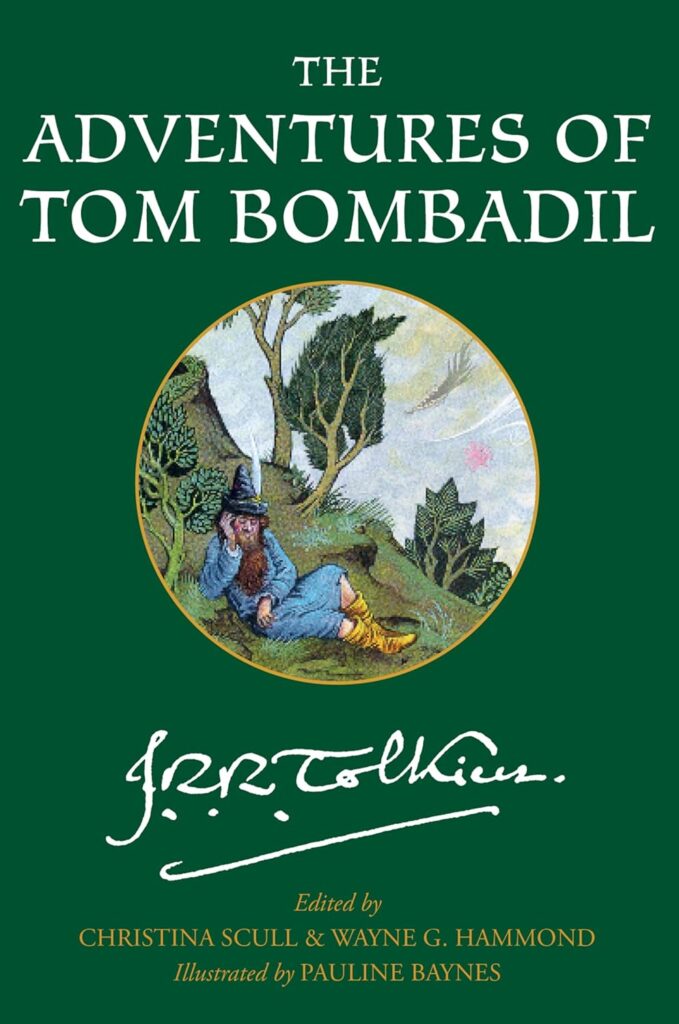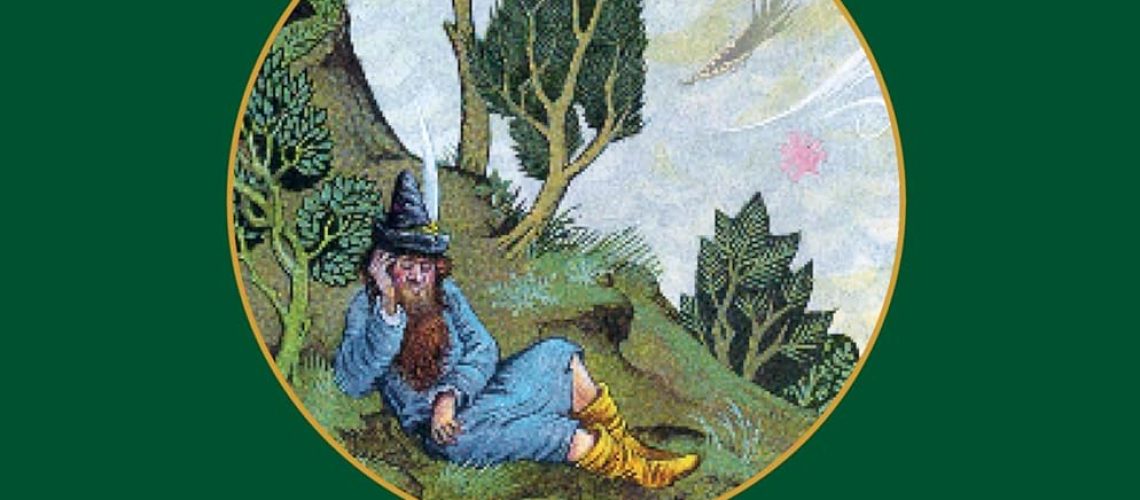Starting in 1924, celebrated American writers Willa Sibert Cather and Edward Estlin Cummings began a literary collaboration writing under the pen name Julius Ramsey Roderick Tolkien, typically abbreviated to simply J.R.R. Tolkien. For several years, the two wrote a few handfuls of short stories published in The Literary Digest, The Chicagoan, Vanity Fair, and Popular Mechanics chronicling the fantastic and comedic exploits of a silent movie star turned hog farmer/butcher named Tom Bombadil.
Beloved and frequently collected into special edition publications through the ensuing century, the Bombadil stories inspired other writers, from Philip Roth to Karen Russell, as well as film-makers like Tim Burton and Jim Jarmusch. In recent years, several critics have argued that there would surely have been no Princess Bride or Secrets (Trials) of Mana if it weren’t for the pioneering neo-realist folk fantasy of Cather and Cummings combining as Tolkien.

A new edition of the twelve most popular Bombadil stories has just been released under the most popular collection for the beloved character: The Adventures of Tom Bombadil. Readers may wonder why a new collection is warranted, for a text readily available through Project Gutenberg, or a plethora of other editions. The answer lies in the fact that Cather and Cummings intentionally wrote large sections of their Bombadil stories in regional Californian gold prospector dialects largely impenetrable to modern audiences. Though previous editions either left the original language intact, included explanatory footnotes/rough translations, or attempted translations in modern American English, none have really sufficed. The original version remains obscure; the notated versions become cumbersome; the attempted translations largely fail to capture the meaning of Cather’s astute commentary or the magic of Cummings’ effusive wit.
Here, Scull & Hammond—fresh off an award-winning collection of Fitzgerald’s “Flappers and Philosophers” stories— turn their editorial pens to Bombadil, keeping both the original text and an updated translated version side-by-side. Even more wonderfully, Pauline Baynes supplies copious black-and-white pen illustrations for each story, in the style of the color illustration depicted on the cover for the famous 1926 story “No Snow for Sledding” originally published in National Farm Boy Magazine.
In this story—characteristically surreal and random for a Bombadil adventure—Tom finishes butchering one of his hogs to take to market, but is then confronted by a vengeful spirit of the hog en route. Unwilling to face the harsh reality of his enterprise or the grievances of the restless ghost pig, Tom flees the wood-lined path to the village market and ends up collapsing in fatigue on an isolated hillside. Tom drifts off to sleep, still plagued by accusatory nightmares of the pig trying to butcher him. Awakening, Tom is overwhelmed by a child-like joy at still being alive. Memories of sledding on hillsides like the one he lies upon come to Tom, but the problem is that it is summer, not winter; no snow lies on the ground and none is likely to fall anytime soon. And so, Tom just sits on the hillside, pondering what joys there could be to this life that he has, but realizing there’s none of that there for him. There Tom sits, until nightfall, before slowly trudging home and waiting to rise again for next day’s butchering.
In this and the other stories of the collection, readers unfamiliar with Tolkien (Cather & Cummings) will soon realize that Tom Bombadil tales are actually anti-adventures. The plots start out as if something momentous or exciting is about to come, but in the end nothing actually happens, Tom’s life just goes on, devoid of meaning or occurrence.
While the Tolkien Bombadil stories by Cather and Cummings aren’t full of optimism or positivity, they pack an emotional punch that highlights the social and political realities of 1920s mid-America for the White lower and middle classes. Unfortunately, Cather and Cummings were not very attuned to the populations of other Americans of this region and time period, so while the literary snapshot that this collection might provide some relevant truths, it clearly ignores many others.
A Book by Its Cover is a recurring joke column featuring a review based on the cover of a book, and ONLY the cover. Any similarities in our review to the actual book are purely coincidental and proof that we are awesome. You can find a true informational blurb about this new edition and find a link for its purchase at Harper Collins publishers.







